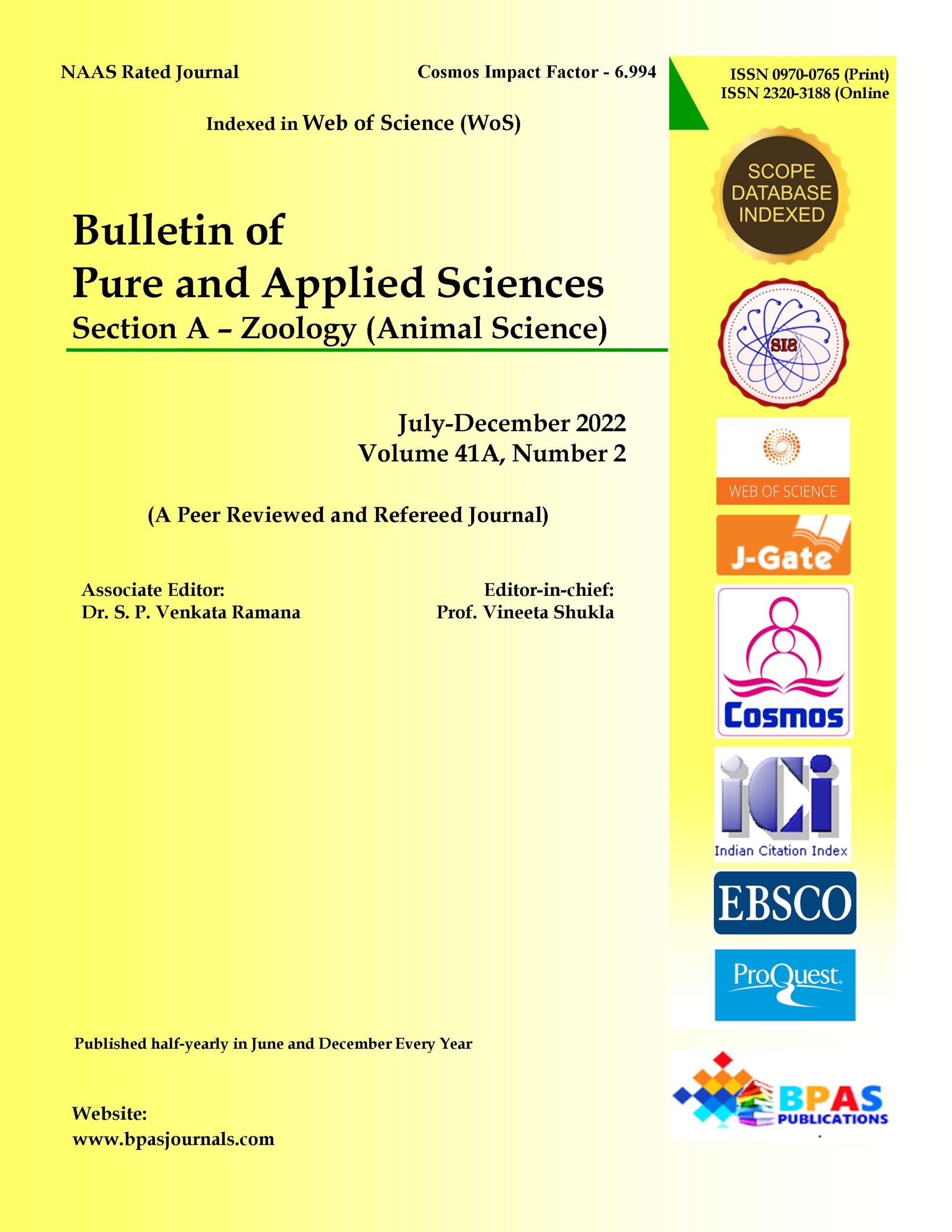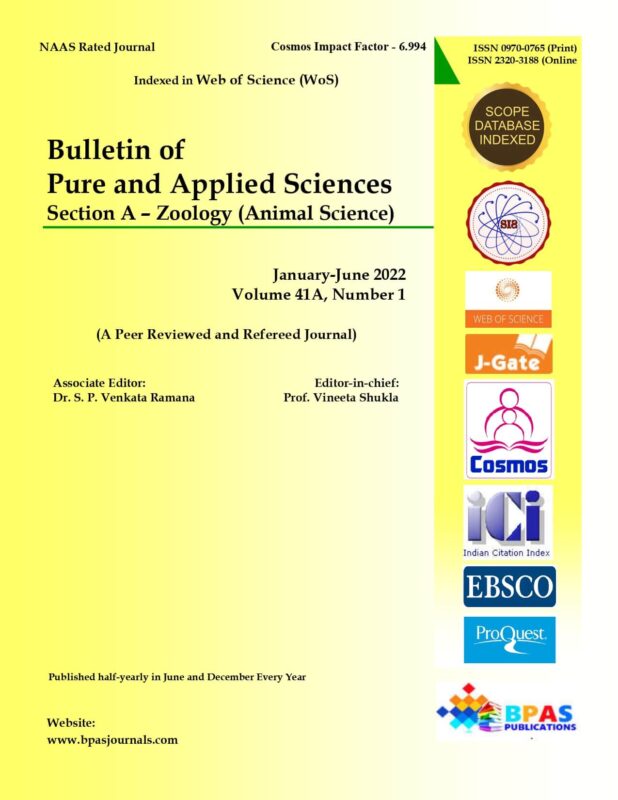Effect of Environmental and Dietary Enrichment on Production Performance, Digestive Process and Some Physiological Parameters in chickens
9.38$
Bulletin of Pure and Applied Sciences
Zoology (Animal Science), Vol.41A, No.2,
July-December 2022: P.193-200
DOI: 10.5958/2320-3188.2022.00024.9
Article Info:
Original Research Article
Received on 26.11.2021
Revised on 08.06.2022
Accepted on 05.09.2022
Published on 15.12.2022
Description
Effect of Environmental and Dietary Enrichment on Production Performance, Digestive Process and Some Physiological Parameters in chickens
1Yunus Samandarovich Ruziev*, 2Shokhzod Shermatovich Khudayberdiev
Author’s Affiliation:
1,2Samarkand State University, Samarkand, Uzbekistan, 703004
*Corresponding author:
Yunus Samandarovich Ruziev
Samarkand State University, Samarkand, Uzbekistan, 703004
E-mail:
shokhzodkhudayberdiev@gmail.com
How to cite this article: Ruziev YS, Khudayberdiev SS (2022). Effect of Environmental and Dietary Enrichment on Production Performance, Digestive Process and Some Physiological Parameters in chickens. Bulletin of Pure and Applied Sciences-Zoology, 41A (2), 193-200.


